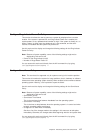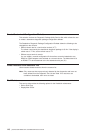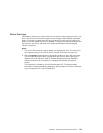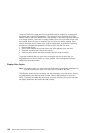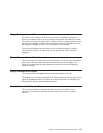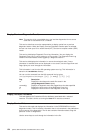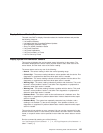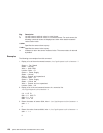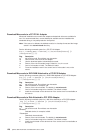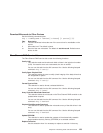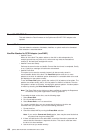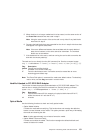
Display Previous Diagnostic Results
Note: This service aid is not available when you load the diagnostics from a source
other than a hard disk drive or a network.
This service aid allows a service representative to display results from a previous
diagnostic session. When the Display Previous Diagnostic Results option is selected,
the user can view up to 25 no trouble found (NTF) and service request number (SRN)
results.
This service aid displays Diagnostic Event Log information. You can display the
Diagnostic Event Log in a short version or a long version. The Diagnostic Event Log
contains information about events logged by a diagnostic session.
This service aid displays the information in reverse chronological order. If more
information is available than can be displayed on one screen, use the Page Down and
Page Up keys to scroll through the information.
This information is not from the AIX operating system error log. This information is
stored in the /var/adm/ras directory.
You can run the command from the AIX command line by typing:
/usr/lpp/diagnostics/bin/diagrpt [[-o] | [-s mmddyy] | [-a] | [-r]]
Flag Description
-o Displays the last diagnostic results file stored in the
/etc/lpp/diagnostics/data directory
-s
mmddyy
Displays all diagnostic result files logged since the date specified
-a Displays the long version of the Diagnostic Event Log
-r Displays the short version of the Diagnostic Event Log
Display Resource Attributes
This task displays the Customized Device Attributes associated with a selected
resource. This task is similar to running the lsattr -E -l
resource
command.
Display Service Hints
This service aid reads and displays the information in the CEREADME file from the
diagnostics media. This file contains information that is not contained in the publications
for this version of the diagnostics. The file also contains information about using this
particular version of diagnostics.
Use the arrow keys to scroll through the information in the file.
124 pSeries 630 Model 6C4 and Model 6E4 User’s Guide




